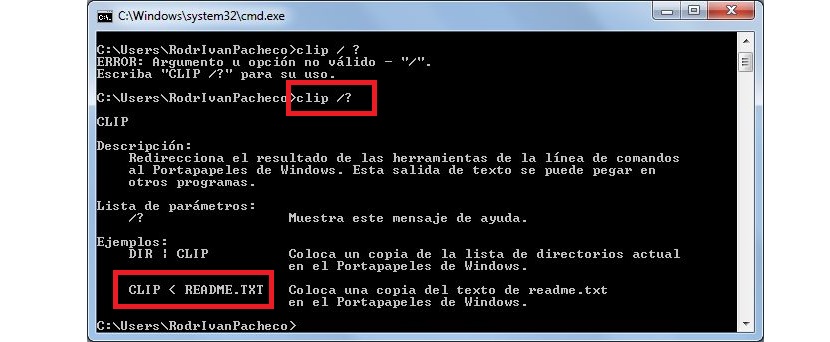
There are many occasions in which we have come to copy an entire text comprised in a paragraph, to later have to paste it into a specific document; This type of task is usually carried out assiduously using the respective keyboard shortcuts in Windows, Linux, Mac or any other operating system that is our preference.
But if we are able to copy the content from any environment (which may well be from an Internet page) to a simple text file, Why not do the opposite task? It could be said that everything is possible and even more so in this case, since the process of copying and pasting is bidirectional depending on each situation and the commands that we use; In this article we will teach you the correct way to proceed when recovering the text from a simple text file to the memory of our Windows computer.
Using a command terminal in Windows
With the outlook a little clearer, now we will dedicate ourselves to trying retrieve the content of a text file to the clipboard (memory) of Windows; For this we will use the CMD command, which will open a terminal window where we will have to write a few sentences.
- We start our Windows operating system.
- We click on the start menu button.
- We write CMD in the search space of this environment.
- From the results we choose the CMD with the right button of our mouse.
- From the contextual menu we choose to Run with Administrator Permission.
Here we will make a short stop to explain what we are going to do in the following steps; There is a command that is installed in Windows by default, which has the name of CLIP; If we write it in the command terminal window that we previously opened, we will receive as a suggestion that a basic nomenclature be defined. If we do not know it, we will be instructed that we must come to the help of this command through the sentence:
clip/?
Immediately new indications will appear on the correct way to use this command within Windows and specifically, in the terminal window that we have opened. Right there we will have the opportunity to admire a few examples, one of them being the one shown in the following screenshot.
What this CLIP command is suggesting is that we should have a file named readme.txt with a content written there, also indicating what we should write in the entire sequence line to be able to copy the content of said file to the RAM memory of our operating system; The process is quite simple to follow although, we should know the place where the file is located. Assuming that it is located on disk C: and in a folder called «Tests» and at this precise moment we are in a very different location from it, the correct way to proceed to get to that place is the following:
- We wrote cd .. until you reach the root of disk C:
- Now we write cd: test
- Finally we write the instruction suggested by Windows.
clip <readme.txt
The last instruction we have placed is valid as long as we have said file (readme.txt) in the location we have mentioned; the file does not necessarily have to have this name, something we have used at the suggestion of the example offered by this command inside the terminal in Windows.
Once we have carried out all these steps supported by the command terminal offered by the execution of the CMD and logically, with the help of the Windows CLIP executable command, we will have in the RAM memory (the clipboard) all the content of said file of text; If we want to check this situation, we should only open any other empty document (which could well be a blog of notes, WordPad or Microsoft's Word) and later, do CTRL + V, with which we will be able to admire that everything that was present will be copied immediately in the aforementioned file.
